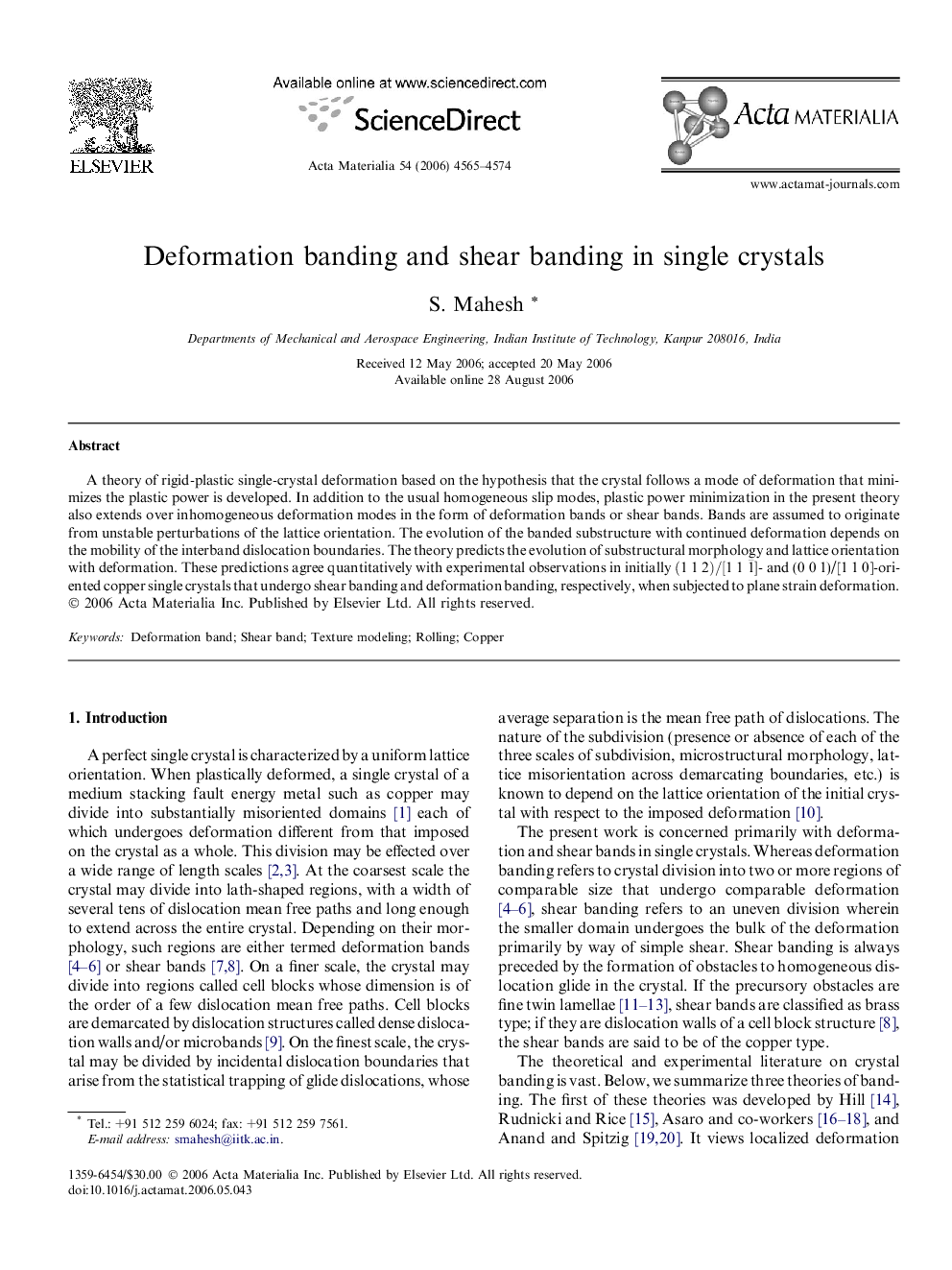| Article ID | Journal | Published Year | Pages | File Type |
|---|---|---|---|---|
| 1450298 | Acta Materialia | 2006 | 10 Pages |
A theory of rigid-plastic single-crystal deformation based on the hypothesis that the crystal follows a mode of deformation that minimizes the plastic power is developed. In addition to the usual homogeneous slip modes, plastic power minimization in the present theory also extends over inhomogeneous deformation modes in the form of deformation bands or shear bands. Bands are assumed to originate from unstable perturbations of the lattice orientation. The evolution of the banded substructure with continued deformation depends on the mobility of the interband dislocation boundaries. The theory predicts the evolution of substructural morphology and lattice orientation with deformation. These predictions agree quantitatively with experimental observations in initially (112)/[111¯]- and (0 0 1)/[1 1 0]-oriented copper single crystals that undergo shear banding and deformation banding, respectively, when subjected to plane strain deformation.
